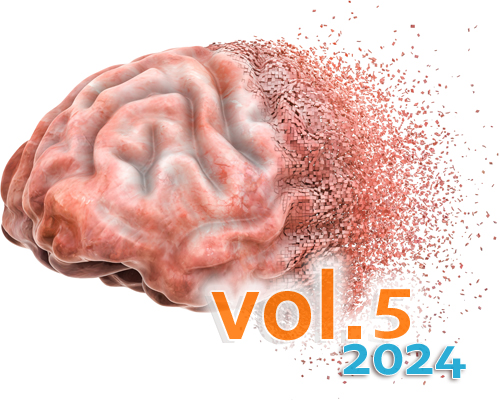Deep RNA sequencing of muscle tissue reveals absence of viral signatures in dermatomyositis
DOI:
https://doi.org/10.17879/freeneuropathology-2024-5149Keywords:
Dermatomyositis (DM), Interferon (IFN), Viral signature, Next generation sequencingAbstract
Objective: To explore a possible connection between active viral infections and manifestation of Dermatomyositis (DM).
Methods: Skeletal muscle biopsies were analyzed from patients diagnosed with juvenile (n=10) and adult (n=12) DM. Adult DM patients harbored autoantibodies against either TIF-1γ (n=7) or MDA5 (n=5). Additionally, we investigated skeletal muscle biopsies from non-diseased controls (NDC, n=5). We used an unbiased high-throughput sequencing (HTS) approach to detect viral sequences. To further increase sequencing depth, a host depletion approach was applied.
Results: In this observational study, no relevant viral sequences were detected either by native sequencing or after host depletion. The absence of detectable viral sequences makes an active viral infection of the muscle tissue unlikely to be the cause of DM in our cohorts.
Discussion: Type I interferons (IFN) play a major role in the pathogenesis of both juvenile and adult dermatomyositis (DM). The IFN response is remarkably conserved between DM subtypes classified by specific autoantibodies. Certain acute viral infections are accompanied by a prominent type I IFN response involving similar downstream mechanisms as in DM. Aiming to elucidate the pathogenesis of DM in skeletal muscle tissue, we used an untargeted high-throughput sequencing and a host depletion approach to detect possible causative viruses.
Metrics
Additional Files
Published
How to Cite
Issue
Section
License
Copyright (c) 2023 Victor M. Corman, Corinna Preusse, Julia Melchert, Olivier Benveniste, Randi Koll, Hans-Hilmar Goebel, Terry C. Jones, Christian Drosten, Ulrike Schara-Schmidt, Sarah Leonard-Louis, Werner Stenzel, Josefine Radke

This work is licensed under a Creative Commons Attribution 4.0 International License.
Papers are published open access under the Creative Commons BY 4.0 license. This license lets others distribute, remix, adapt, and build upon your work, even commercially, as long as they credit you for the original creation. Data included in the article are made available under the CC0 1.0 Public Domain Dedication waiver, unless otherwise stated, meaning that all copyrights are waived.



















